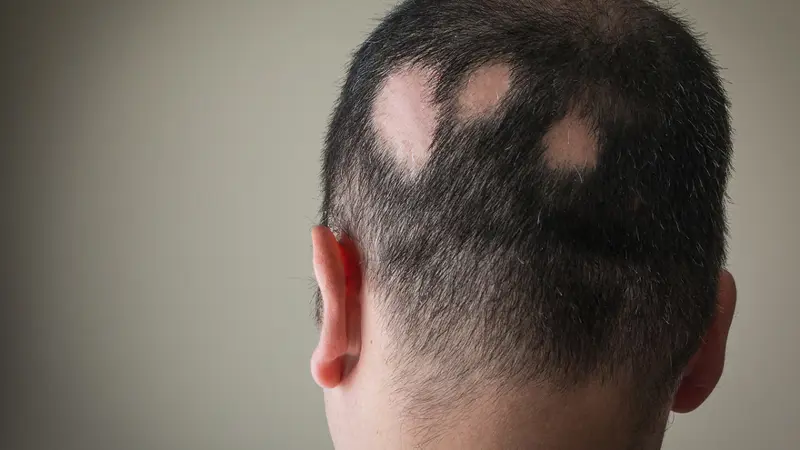
Introduction
Alopecia Areata is a medical condition characterized by the loss of hair from the scalp or other regions of the body. The causes of this condition are diverse and encompass genetic factors, hormonal imbalances, autoimmune disorders, specific medications, and the impact of physical or emotional stress. Alopecia can present itself in various forms, such as androgenetic alopecia (male or female pattern baldness), alopecia areata (an autoimmune disorder), telogen effluvium (a disturbance in the typical hair growth cycle), among others. It's important to note that alopecia is a multifaceted condition with different manifestations and diverse underlying causes.
Hair Loss Varieties
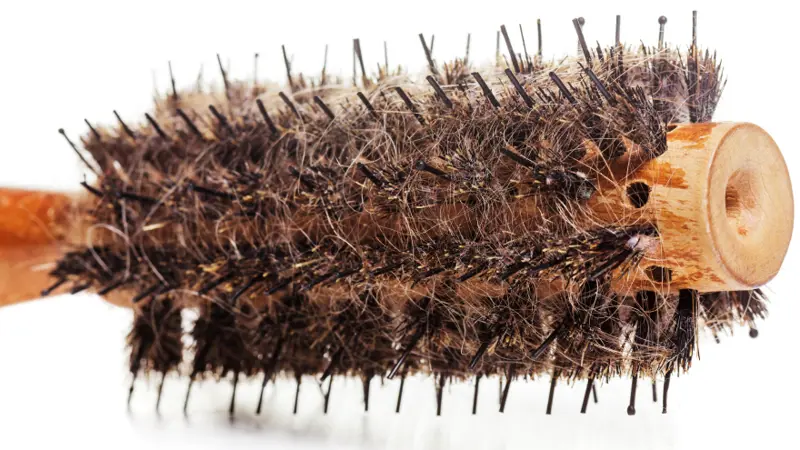
Hair loss manifests in various forms, which encompass:
- Androgenetic Alopecia (Male or Female Pattern Baldness): The most prevalent type of hair loss results from a blend of genetic predisposition and hormonal influences. In men, it often takes the form of a receding hairline and crown thinning, while in women, it appears as diffuse thinning across the scalp's top.
- Telogen Effluvium: This hair loss variety arises when disruptions in the standard hair growth cycle lead to an increased number of hair follicles entering the shedding phase. Possible triggers include hormonal fluctuations, stress, specific medications, and other contributing factors.
- Alopecia Areata: An autoimmune disorder responsible for hair loss on the scalp and, at times, other areas of the body.
- Traction Alopecia: Hair loss that results from constant hair shaft pulling and tension, typically attributed to tight hairstyles like braids or ponytails.
- Anagen Effluvium: Exposure to particular chemicals or medications can provoke this form of hair loss, primarily impacting actively growing hair shafts.
- Scarring Alopecia: This type of hair loss emerges from inflammation and scarring of hair follicles, resulting in permanent hair loss.
- Nutritional Hair Loss: Deficiency in essential nutrients, such as iron, zinc, and vitamin D, can lead to this type of hair loss.
- Hormonal Hair Loss: Hair loss can also stem from hormonal imbalances, as observed during pregnancy, menopause, or thyroid disorders.
For an accurate diagnosis and suitable hair loss treatment, it is imperative to seek professional guidance from a healthcare provider.
Understanding Alopecia Areata

Alopecia areata is an autoimmune condition characterized by the loss of hair on the scalp and potentially other body regions. It transpires when the immune system erroneously targets and damages hair follicles, leading to hair shedding. This condition can impact individuals of any age, causing hair loss in isolated patches or total baldness. Regrettably, there is presently no definitive remedy for alopecia areata. Nonetheless, available treatment choices encompass corticosteroid injections, topical remedies, and light therapy.
Alopecia Areata: Uncovering Its Origins
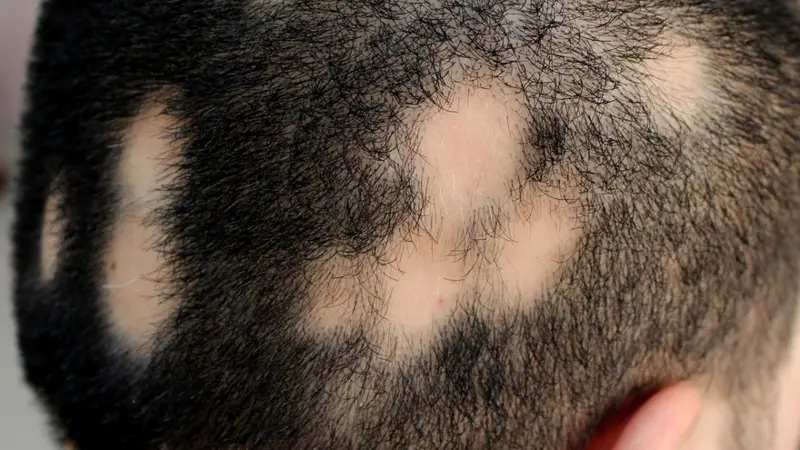
The precise cause of alopecia areata remains partially elusive, yet it is strongly associated with being an autoimmune disorder. Autoimmune disorders involve the immune system's misguided assault on healthy cells within the body. In the context of alopecia areata, this autoimmune response takes aim at the hair follicles, culminating in hair loss.
There's also a belief in a genetic predisposition to this condition, as it often clusters within families. Research indicates that individuals with alopecia areata frequently have a heightened likelihood of developing other autoimmune disorders like thyroid disease, vitiligo, and lupus.
Furthermore, stress, hormonal fluctuations, and exposure to specific chemicals are factors that can potentially trigger the onset of alopecia areata. It's vital to underscore that alopecia areata is unrelated to issues of personal hygiene or any contagious elements.
Alopecia Classifications

When discussing treatment options, your dermatologist might refer to the specific type of alopecia you're experiencing:
- Alopecia Areata: The most common manifestation, marked by hair loss in one or more circular patches on the scalp or other body areas.
- Alopecia Totalis: A severe variant of alopecia areata resulting in complete hair loss on the scalp.
- Alopecia Universalis: The most extreme subtype of alopecia areata, leading to complete hair loss on the scalp, face, and body.
- Ophiasis: This presents as a distinctive pattern of hair loss along the sides and back of the scalp, resembling a wave shape.
- Scarring Alopecia: A rare form of alopecia areata where hair loss is accompanied by scalp scarring.
- Alopecia Areata Incognito: A variation of alopecia areata that may resemble other types of hair loss, such as androgenetic alopecia or telogen effluvium.
- Acute Alopecia Areata: This is characterized by sudden, rapid hair loss within a short period.
- Chronic Alopecia Areata: This represents a long-lasting form of the condition, with persistent hair loss over the course of months or even years.
Inheriting Alopecia Areata: What You Should Know
Alopecia areata does indeed have a genetic component, which means that if you have this condition, there is a possibility that your child could also develop it. However, it's crucial to understand that having a family history of alopecia areata does not guarantee that your child will experience it. Alopecia areata is a complex disorder influenced by various genetic and environmental factors, making it challenging to predict who will be affected.
If you have alopecia areata and are contemplating parenthood, it's advisable to engage in a discussion with your healthcare provider about the potential risk to your child and any proactive measures that can be taken to monitor their health.
Furthermore, it's important to educate your child about alopecia areata, including its symptoms and available treatment options. This knowledge can empower them to recognize the condition and seek professional assistance promptly if they do develop it in the future.
Alopecia Areata Symptoms: What to Look For
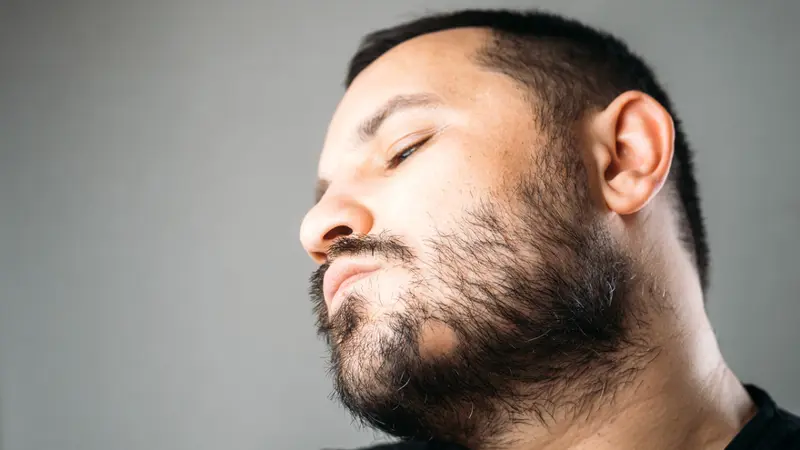
The primary indication of alopecia areata is hair loss, which can manifest on the scalp, face, and various body areas. This hair loss may present as abrupt and sporadic, leading to small, scattered clumps of hair falling out. Alternatively, it can progress slowly over an extended period.
Alopecia areata may present with various accompanying symptoms, including:
- Circular or oval areas of hair loss on the scalp or other body regions.
- Short, fractured hair along the periphery of affected areas.
- Sensations of itching, burning, or soreness on the scalp.
- Alterations in nail health, such as pitting, ridges, or thickening.
- Exclamation mark hairs, which are short, broken hairs found at the edges of bald patches.
- In certain instances, hair loss can be severe and extensive, culminating in complete baldness on the scalp or body.
It's important to note that not everyone with alopecia areata will experience all these symptoms, and the intensity of symptoms may differ from person to person. If you suspect that you or a loved one may be dealing with alopecia areata, it is advisable to seek professional medical guidance for an accurate diagnosis and the appropriate course of treatment.
Diagnosing Alopecia Areata
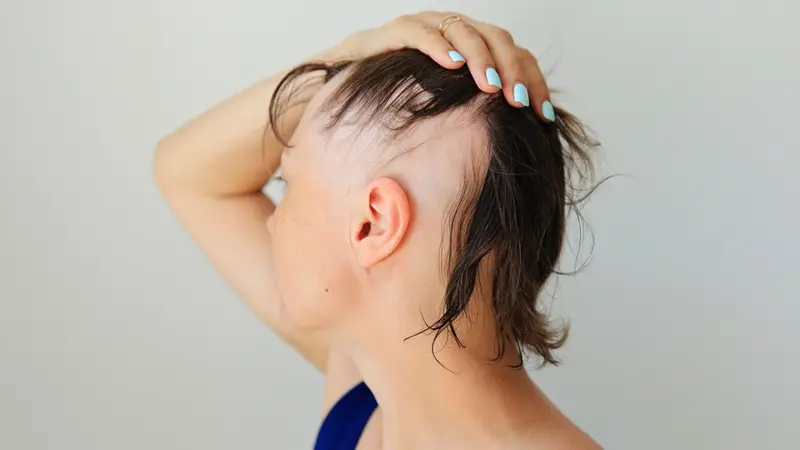
Alopecia areata is typically diagnosed through a comprehensive assessment that encompasses several key elements, including the patient's medical history, a physical examination, and specific laboratory assessments.
Medical History: The healthcare provider will delve into the patient's medical history to gather crucial information regarding their symptoms, family history, and any potential triggers or underlying health conditions.
Physical Examination: During this examination, the healthcare provider will scrutinize the patient for hallmark signs of alopecia areata, such as the presence of round or oval hair loss patches on the scalp or other body areas. A "pull test" may also be conducted, involving a gentle tug on a group of hairs to evaluate their propensity to come out easily.
Skin Biopsy: To confirm the diagnosis, a skin biopsy may be recommended. This procedure entails obtaining a small skin sample from the affected region, which is subsequently examined under a microscope.
Blood Tests: Blood tests could be conducted to screen for the presence of other autoimmune disorders. Individuals with alopecia areata are more prone to having comorbid autoimmune conditions.
Once the diagnosis of alopecia areata is established, the healthcare provider collaborates with the patient to formulate an appropriate treatment plan. The chosen course of action depends on the type and severity of the condition, as well as the patient's individual preferences and needs.
Alopecia Areata Treatment Options

While there is no definitive cure for alopecia areata, a range of treatment options exists to mitigate hair loss and encourage regrowth. Treatment choices for alopecia areata encompass:
- Topical Corticosteroids: These medications, applied directly to the scalp, serve to reduce inflammation and facilitate hair regrowth.
- Injections: Corticosteroid injections administered directly into the scalp can diminish inflammation and stimulate hair regrowth.
- Topical Immunotherapy: This method involves applying substances like diphencyprone (DPCP) to the scalp, inciting an allergic response that fosters hair growth.
- Light Therapy: Employing laser or light therapy (phototherapy) on the scalp may promote hair regrowth.
- Oral Medications: While the effectiveness of oral medications like minoxidil, finasteride, and dutasteride for treating alopecia areata remains debatable, they are sometimes prescribed.
- Wigs and Hairpieces: These can be utilized to conceal hair loss while awaiting natural regrowth.
- Emotional Support: Coping with alopecia areata can be emotionally challenging. Counseling and support groups provide a valuable resource to help individuals address the emotional facets of the condition.
It is essential to acknowledge that not all treatments are universally effective, and discovering the most suitable treatment plan may require time and experimentation. Some individuals may even experience spontaneous hair regrowth without treatment. Your healthcare provider can assist in determining the optimal treatment strategy, taking into account the type and severity of your condition and your personal preferences.
Home Remedies for Alopecia Areata
Alopecia areata lacks a definitive cure, and while certain home remedies may aid in reducing hair loss or encouraging regrowth, they are not universal solutions and should not replace medical treatment. Some home remedies that individuals have explored for alopecia areata include:
- Scalp Massage: Gently massaging the scalp with essential oils like lavender or rosemary may stimulate hair growth.
- Diet: Maintaining a nourishing diet replete with vitamins and minerals, including iron, zinc, and vitamin D, may support hair growth.
- Herbs: Some have experimented with herbs such as saw palmetto, ginseng, and green tea to promote hair growth.
- Acupuncture: A few individuals have reported positive results with acupuncture in relation to hair growth.
- Stress Management: The reduction of stress through exercise, meditation, or other stress management techniques may help mitigate or halt hair loss.
It is paramount to consult with a healthcare professional prior to attempting any home remedies, especially if you are currently taking medications or have underlying medical conditions. They can offer guidance on the safety and potential effectiveness of specific remedies for your particular situation.
Alopecia Areata in Children
Alopecia areata is not exclusive to adults; it can affect children of any age. Approximately 2% of all alopecia areata cases are reported in children. The symptoms in children closely mirror those in adults, encompassing sudden or gradual hair loss in one or more patches on the scalp or other body areas. It's common for this hair loss to be accompanied by sensations of itching, burning, or soreness on the scalp.
While the precise cause of alopecia areata in children remains partially understood, it is primarily associated with being an autoimmune disorder. Furthermore, there appears to be a genetic component, as the condition often exhibits a familial pattern.
Treatment options for alopecia areata in children parallel those for adults. These options may include topical or injected corticosteroids, topical immunotherapy, light therapy, and the use of wigs or hairpieces.
It's crucial to recognize that alopecia areata can pose emotional challenges for children, and seeking counseling or support groups can provide valuable assistance to both the child and their family.
Parents are advised to promptly seek medical assistance if their child experiences hair loss and to collaborate with a healthcare professional in crafting an appropriate treatment strategy.
Alopecia Areata Prognosis
The outlook for alopecia areata can differ widely depending on each unique case. Some individuals encounter a single episode of hair loss, followed by spontaneous hair regrowth, while others may grapple with recurring episodes of hair loss across time.
In specific instances, hair loss can be extensive and enduring, potentially leading to complete baldness on the scalp or body. For some, the hair loss may even become permanent.
The condition's severity exhibits considerable variability among individuals. It ranges from minor localized patches of hair loss to more widespread hair loss experiences.
While treatment holds the potential to mitigate or halt hair loss and stimulate regrowth, its efficacy varies among individuals. In some cases, treatment may not yield the desired results, and certain individuals may not respond to it at all.
Conclusion
Alopecia areata, an autoimmune disorder, leads to hair loss on the scalp and potentially other body areas due to the immune system's misdirected attack on hair follicles.
While it can affect individuals of any age, it's most commonly observed in those under 30. Genetic factors coupled with environmental influences are believed to contribute to its onset.
Regrettably, there is no definitive alopecia areata cure. However, a range of treatment options exists to mitigate hair loss and encourage regrowth, including corticosteroids, immunotherapy, light therapy, oral medications, and the use of wigs or hairpieces.
It's vital to recognize that the effectiveness of these treatments can vary from person to person, and patience may be necessary to identify the most suitable approach. Some individuals may experience spontaneous hair regrowth without intervention.
The prognosis for alopecia areata hinges on the individual case and the severity of the condition. It can exert a profound impact on self-esteem and emotional well-being, emphasizing the importance of emotional support and counseling when needed.